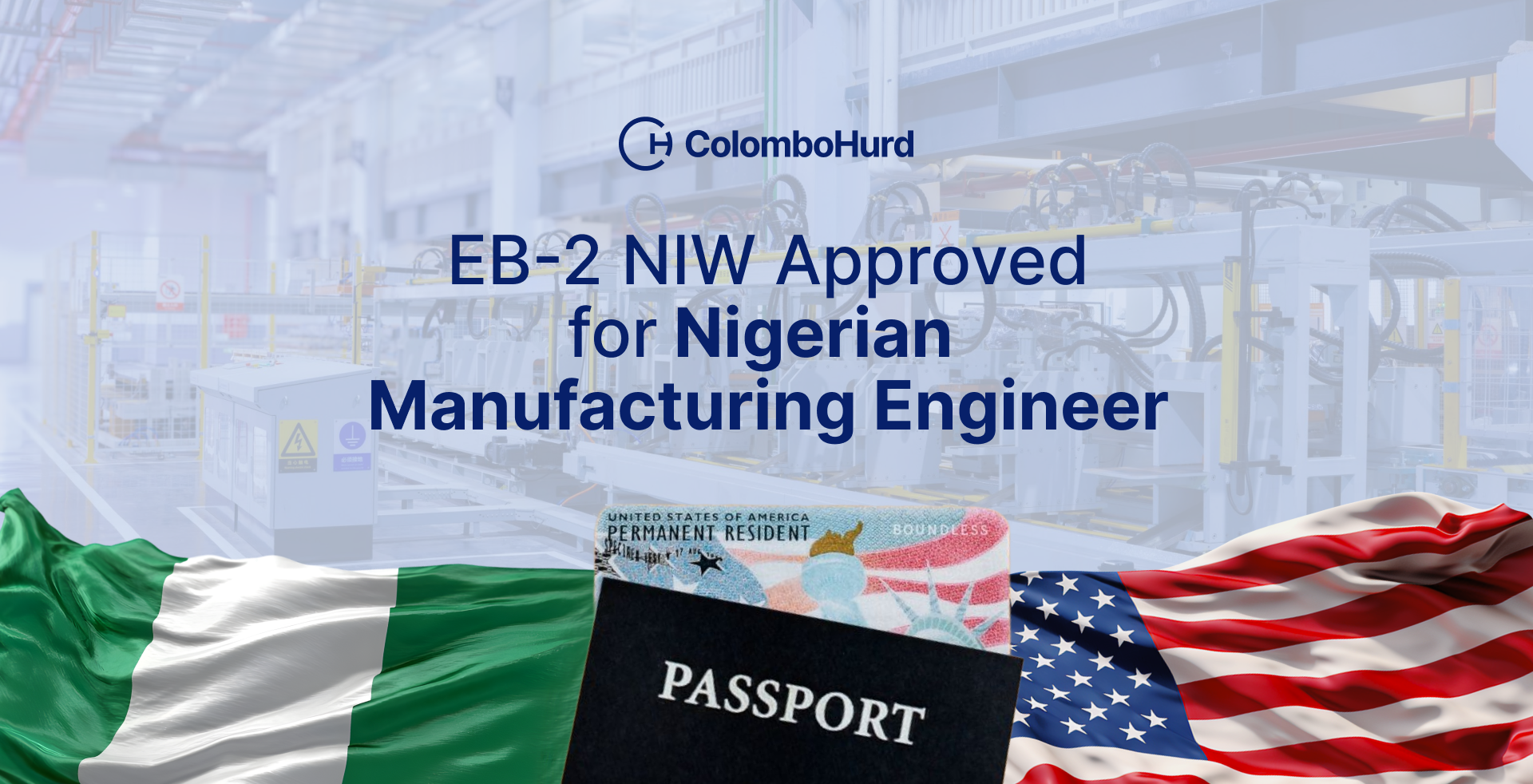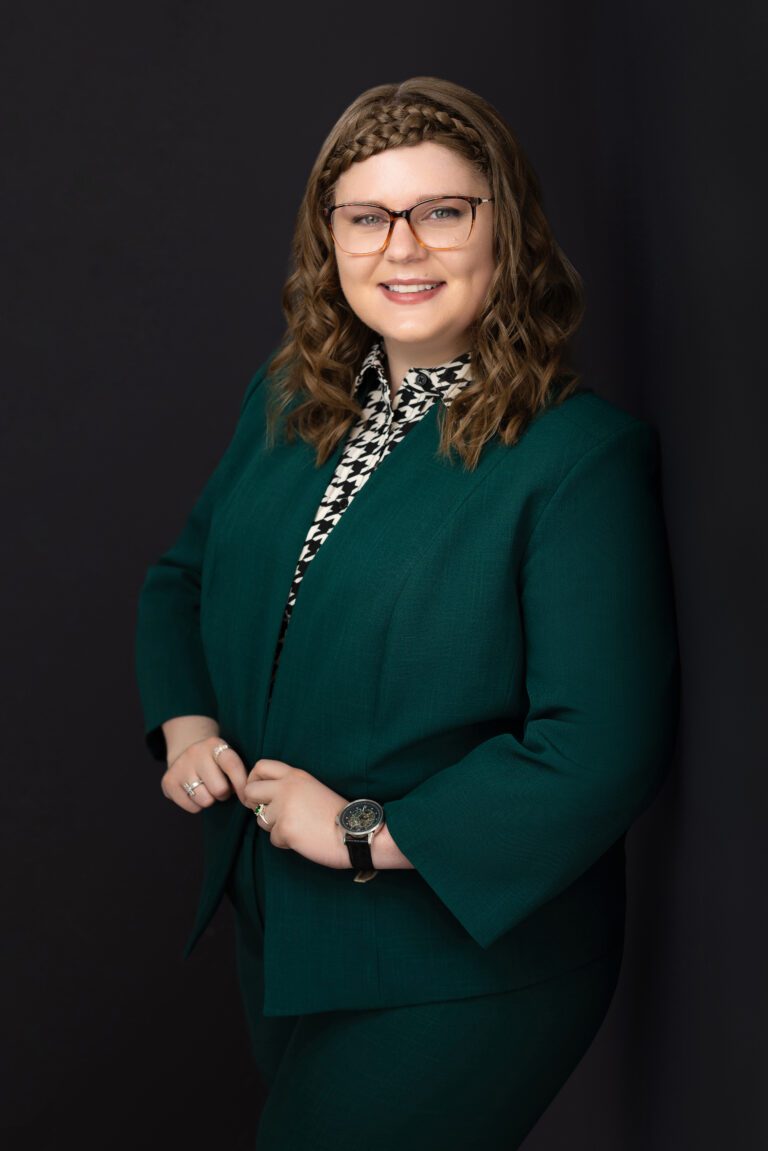For our client, an engineer from Nigeria, innovation is more than building new technology and tools; it means protecting workers on manufacturing and construction sites so they return home safely each day.
His commitment to redefining workplace safety not only transformed the environments he managed but also led to the approval of his EB-2 NIW petition in November 2024.

Colombo & Hurd Immigration Attorney Cara Beth Thierbach explained how her client’s innovative approach to workplace safety systems played a central role in the petition’s success and why the EB-2 NIW is a viable path for professionals whose independent initiatives serve U.S. public health and economic interests:
“Workers specializing in health, safety & environment (HSE) management systems, especially those who have technical knowledge of the industry, advanced machinery, and workplace environments, become increasingly valuable in creating interdisciplinary management systems to reduce workplace incidents while ensuring productivity increases. The EB-2 NIW pathway allows a way forward for these creative leaders who are looking to maximize safety measures that allow for optimal productivity as the demand for U.S. manufacturing is on the incline.”
Client Profile

With a strong STEM background and years of engineering leadership, our client has built a career defined by translating technical knowledge into action. He holds the U.S. equivalent of a Bachelor of Science in Chemical Engineering, a DHS-designated STEM degree, and brings more than 15 years of experience leading projects in health and safety systems and manufacturing engineering.
In his current role as a senior manager at a leading global company, he has advanced workplace safety from a procedural requirement to a core part of organizational culture. By blending technical expertise with practical solutions, his safety system enables teams to recognize risks, prevent accidents, and keep projects on track.
Ms. Thierbach highlighted that it’s this blend of technical depth and real-world contributions that made this particular client stand out.
“The client plans to further the impact of his endeavor by introducing his system as a new safety standard in construction projects across the industry to be adapted and adopted by other professionals and individuals in the manufacturing sector. In doing so, he utilizes aspects from each area of his professional focus, engineering and project management, construction processes, HSE, and systems optimization, to continue his work in the field.”
From Workplace Solution to National Priority
Construction and manufacturing remain pillars of the U.S. economy, but also among its most hazardous industries. Each year, preventable accidents cost lives, delay projects, and increase costs.
Although our client had an impressive record of leadership and results, the greater challenge was persuading USCIS that his contributions went beyond company-level benefits and rose to the level of national significance.
His proposed endeavor, developing a system to help teams anticipate risks, prevent injuries, and improve operational efficiency, addresses a pressing gap in workplace safety and, most importantly, directly aligns with U.S. priorities in public health, economic competitiveness, and infrastructure growth.
As Ms. Thierbach explained:
“The client’s focus on making systematic changes in process management addresses safety gaps within the construction and manufacturing sectors by providing companies in these sectors with a unique value proposition to present before manufacturing clients and owners, a system that addresses both safety and productivity. Safety becomes an engine for business growth instead of a cost center. His endeavor seeks to create this positive cycle, resulting in a win-win-win for the construction workers, their companies, and the manufacturers the construction companies work for.”
Positioning Safety as an Engine for Growth
For the EB-2 NIW petition, our strategy was to position the client’s safety framework not just as an internal workplace tool, but as a system with broad national impact capable of delivering lasting benefits across industries and to the country as a whole.
We framed his project within the larger context of U.S. economic and policy priorities, demonstrating how it both reduces risks and improves efficiency in sectors that are central to national growth. We connected the client’s work to current U.S. government initiatives, such as:
- Occupational Safety and Health Administration (OSHA) ‘s workplace safety programs
- The National Strategy for Advanced Manufacturing
- The GSA Construction Excellence Program
We emphasized the client’s proven leadership and measurable results, including the successful management of large-scale projects with exemplary safety records, as well as the formal recognition from a leading global manufacturer. Together, these achievements demonstrated both the effectiveness of his framework and his ability to drive adoption industry-wide.
Ms. Thierbach noted why OSHA-aligned innovation is critical to the national interest:
“As the manufacturing and construction sectors evolve, OSHA is the main governmental arm responsible for adapting policies and regulations to address those changes. This is especially relevant in the current world of cutting-edge and advanced technologies, and one that emphasizes the importance of productivity and production from the U.S. manufacturing sector for the national economy. Continuous collaboration with OSHA is not only critical to the adoption of advanced technologies, but it is also essential to ensuring that safety standards are able to adapt to the changing landscape, both of which continue to be national interests.”
A Green Light for Innovation in Safety
The EB-2 NIW petition was approved, allowing our client to continue advancing his work in the United States. With the approval of his I-140 petition, he is now positioned to introduce his workplace safety framework more broadly across U.S. industries.
Interest in his system is growing. Industry professionals have taken notice, and through his involvement in organizations like CURT, LCI, and PMI, he has opportunities to share his methods and shape safety standards on a national scale.
Wondering if You Qualify?
Your background may align with the requirements for the EB-2 NIW.
How Safety Leaders Succeed with EB-2 NIW
This case highlights how innovation in workplace safety can be more than a company advantage; it can rise to the level of national importance. Technical expertise carries the greatest impact when framed as a direct response to urgent U.S. priorities and positioned in a way to strengthen the nation’s future.
Ms. Thierbach concluded:
“This case demonstrates the continued national emphasis on the intersection of innovation and safety. For STEM professionals, particularly, cases like this reinforce the importance of having interdisciplinary experience. Incorporating principles from project management, complex manufacturing systems, process optimization, and engineering, STEM professionals are able to offer practical strategic solutions through technical expertise and regulatory knowledge.”
“The client’s focus on making systematic changes in process management addresses safety gaps within the construction and manufacturing sectors by providing companies in these sectors with a unique value proposition to present before manufacturing clients and owners, a system that addresses both safety and productivity. Safety becomes an engine for business growth instead of a cost center.”

